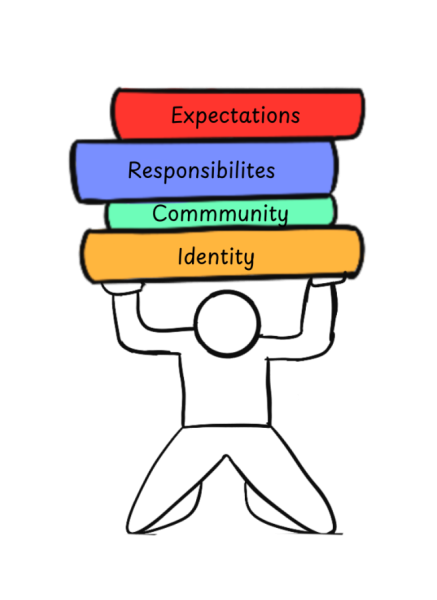The Garlick Press: Natural disaster prevention is better than procrastination
The storm has already broken and now all of us are left to clean up the damage. Hurricane Harvey in Houston, and the small but mighty Hurricane Irma in the Florida Keys have hit with lasting impacts.
Hurricane Harvey was only a Category 1 storm when it began, but grew into a Category 4 storm as winds picked up speed from 110 mph to 130 mph, according to the National Hurricane Center.
Harvey lasted only a few days, but the billions of dollars in damage will stand for years. Rebuilding projects are estimated to be around $200 billion, which is 25 percent more than the costs to rebuild after Hurricane Katrina, according to CNBC. The destruction in New Orleans from Katrina is still being dealt with now, and Harvey is only in its initial stage of debris clean-up and rescuing the people obstructed by the storm.
It is time to take notice. With these current trends in weather, it seems like the entire nation should be ready to brace against an uphill battle.
The hurricane surge is definitely not subsiding either. Hurricane Maria reached a Category 5 rating Monday after forming a pinhole in the center, a strong indicator for a nasty storm. According to the Weather Channel, the combination of warm ocean temperatures and moist atmosphere allowed the storm to reach this status, and the hurricane will potentially damage the Virgin Islands and Puerto Rico severely.
Yes, hurricane season is annual due to normal weather patterns, but the rate these clouds are brewing at is something entirely new. Considered the “most violent storms on Earth” by NASA, only heat and water are required to create them, and the levels of both are rising due to melting icebergs and greenhouse gases.
The records have already been toppled this year. The count for Atlantic hurricanes clocked in around 13, exceeding expectations for the past six months, according to NOAA.
The evidence proving climate change is already alarming, with rising global temperatures and receding glaciers. But even with these numbers, it seems like a real slap in the face from the weather is required. The only thing that will motivate real proactivity is the consequence itself, when there is no way around it.
But even with these obvious signs, only some of us are taking notice of these alarming new precedents in weather change. Precautions are still overlooked.
In Houston, 69 lives were taken, and thousands were left homeless and devastated from the flooding and water destruction. The city, however, should have been prepared for these possibilities.
Houston is only 40 feet above sea level and within range of the annual hurricane season due to its proximity from the Gulf of Mexico. So why were the people of Houston not prepared for such a disaster?
The city has added over 100,000 residents this past year, and has seen a 23 percent increase in population since 2001, according to CNN. The design was not well planned for natural disasters, however, and faces issues due to its urban sprawl.
The state is known to have “no zoning” regulations, which basically means buildings can be built in any location without having to pass requirements for flooding and other environmentally hazardous factors. Houston therefore falls behind the nation’s policies for a “freeboard,” a building requirement to avoid flooding. Houston set that requirement for only one foot, and that’s not prepared. Compared to cities like Nashville that require four feet, this standard simply is not up to par.
The storm was not the only factor affecting Houston, it was also city planning. These factors are all evidence that that outcome could have been prevented with smarter city planning and tighter regulation. Now the entirety of Houston has to rebuild itself.
A hurricane won’t hit California, but other natural disasters such as earthquakes can.
The repercussions Houston has faced can be an warning for how California should take extra precaution in protecting homes before disaster hits.
Smaller earthquakes hit areas around San Francisco more often than we think ranging from 1.0 to 4.0 in the past month, according to Earthquake Track.
Don’t think the chance of a big earthquake is not affected by climate change, however. Earthquakes are triggered by slight increase in the pressures between tectonic plates, which are already coiled up like a spring. According to The Guardian, the rising temperatures that cause tsunamis and hurricanes can also cause a release of these strains in the crusts, which can result in the Earth’s crust shifting along the fault line. This process can not only trigger earthquakes, but also volcanoes rupturing as well.
The next big earthquake to shake California, known by locals as “The Big One” has become a pending reminder in our minds. We must be prepared for when natural disaster strikes. The Bay Area already requires a Standard Set Plan to strengthen homes and prevent weaker infrastructure from collapsing, implemented by the Association of Bay Area Governments.
It seems obvious enough that we cannot prevent the weather by brute force, but we should always be prepared and work towards preventing further global warming. With the rising temperatures resulting in weather pattern changes, it is a necessity to get everyone on their feet and reinforce their homes for the battle ahead.







